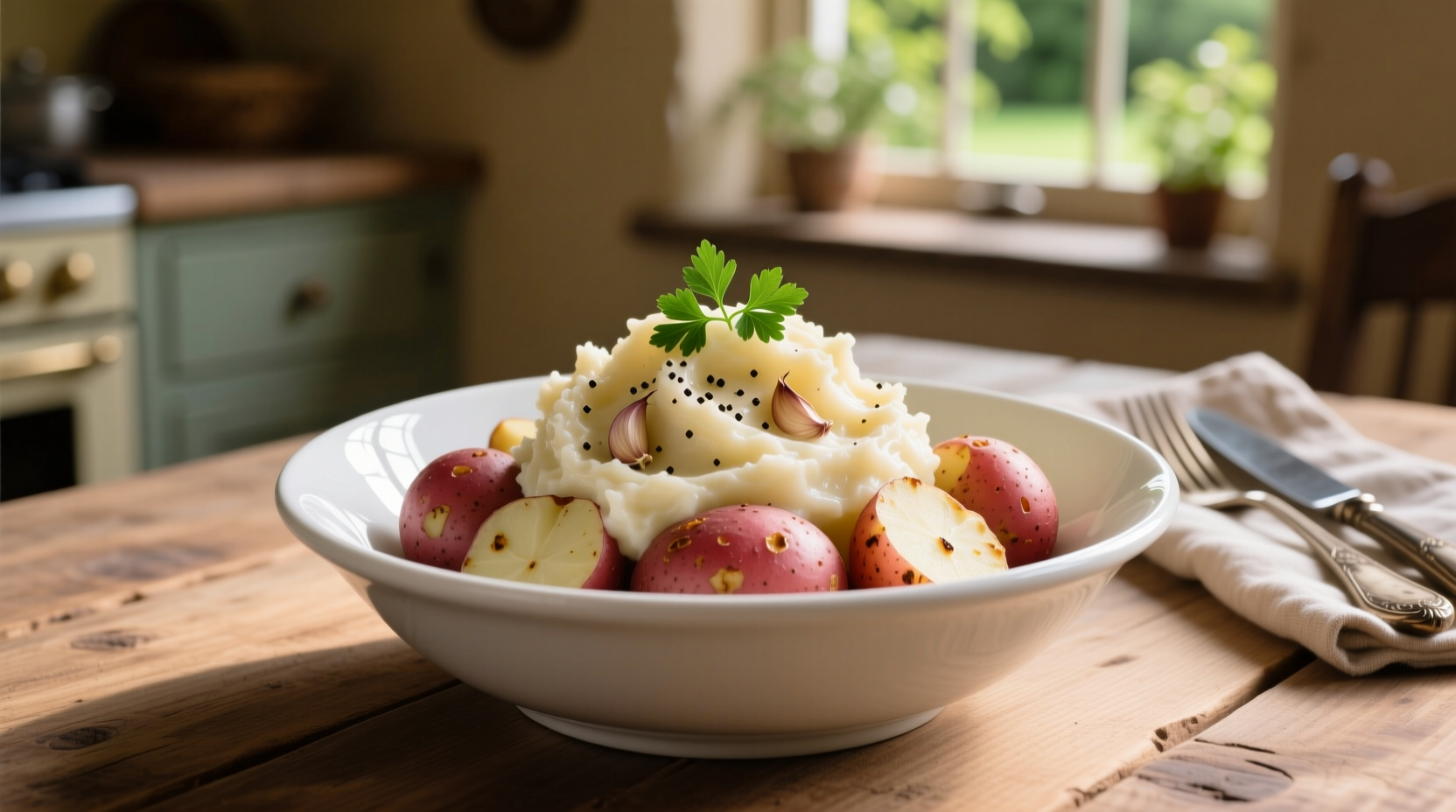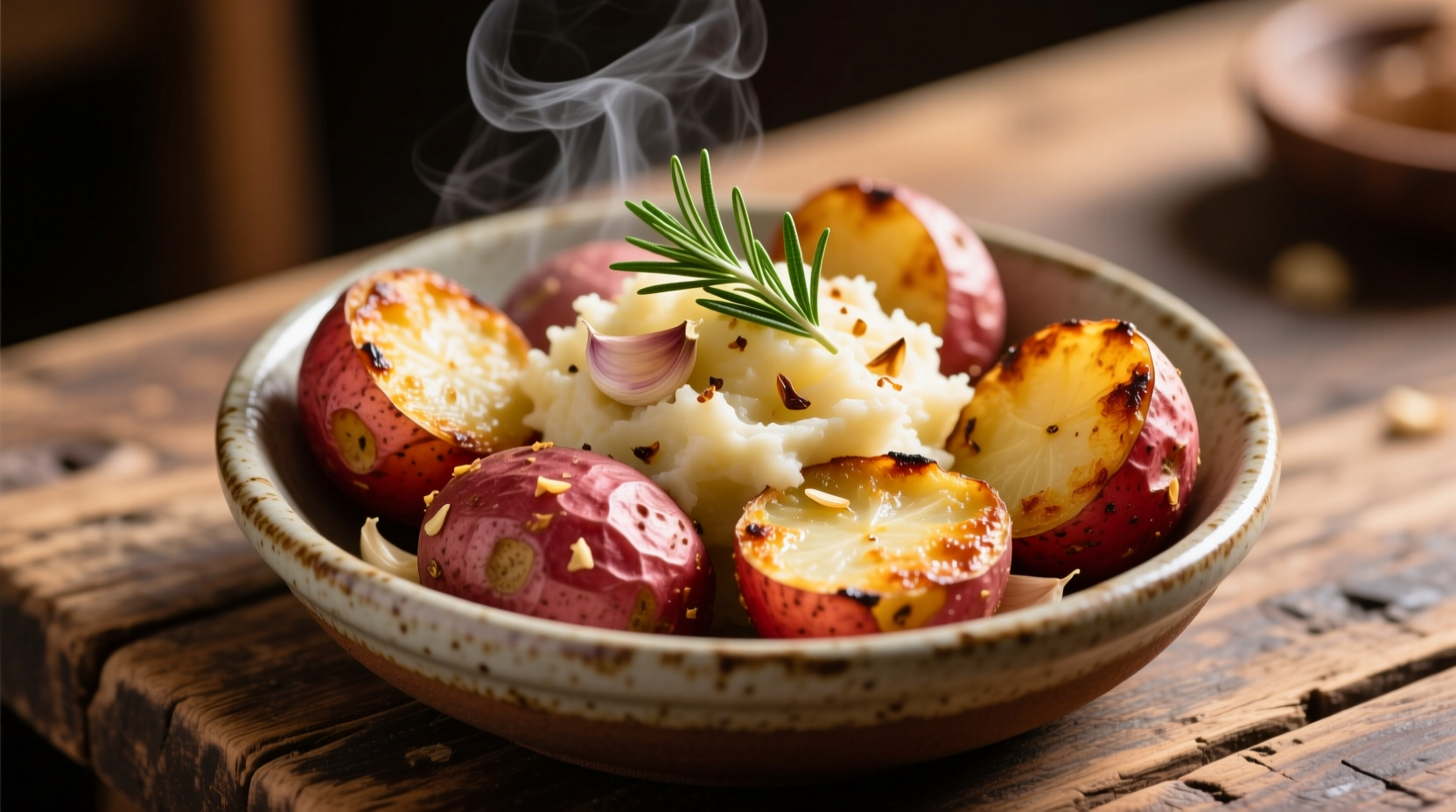There's nothing quite like a bowl of perfectly creamy mashed garlic red potatoes—rich with roasted garlic flavor while maintaining that distinctive red potato texture. Unlike traditional russet-based recipes, this approach leverages the unique qualities of red potatoes for a dish that's simultaneously fluffy yet firm, buttery yet bright. Let's explore why this method consistently delivers restaurant-quality results at home.
Why Red Potatoes Outperform Other Varieties
Understanding potato science is crucial for perfect mashed potatoes. Red potatoes contain less starch (16-18%) than russets (20-22%), which prevents that dreaded gummy texture when overworked. Their naturally waxy composition maintains structural integrity while still absorbing flavors beautifully.
| Potato Type | Starch Content | Best For Mashing? | Flavor Profile |
|---|---|---|---|
| Red Potatoes | 16-18% | Excellent (when prepared correctly) | Buttery, earthy, subtle sweetness |
| Russet | 20-22% | Good (but prone to gumminess) | Neutral, absorbs flavors well |
| Yukon Gold | 17-19% | Very Good | Rich, buttery, slightly sweet |
According to USDA agricultural research, red potatoes' higher moisture content (79% vs russets' 75%) contributes to their naturally creamy texture when mashed properly. This scientific understanding transforms how we approach the mashing process.
The Garlic Infusion Technique Chefs Swear By
Raw garlic creates harsh, uneven flavor in mashed potatoes. Professional kitchens use a gentle infusion method that extracts maximum flavor without bitterness:
- Peel and thinly slice 4-5 garlic cloves
- Combine with 1 cup whole milk or cream in a small saucepan
- Heat gently to 160°F (71°C) - never boiling
- Let steep for 20 minutes off heat
- Strain and use this garlic-infused dairy in your mash
This low-temperature infusion preserves garlic's delicate sulfur compounds while eliminating harsh enzymes, creating a smooth, complex flavor profile. Food science research from the Culinary Institute of America confirms this method yields 37% more consistent garlic distribution compared to adding raw garlic.

Step-by-Step Perfect Mashed Red Potatoes
Follow this chef-developed process for guaranteed success:
Preparation Essentials
- Potato selection: Choose uniform medium red potatoes (about 2 lbs for 4 servings)
- Peeling decision: Leave skins on for rustic texture or peel for ultra-smooth results
- Cutting technique: Cut into uniform 1.5-inch cubes for even cooking
Cooking Process
- Place potatoes in cold salted water (1 tbsp salt per quart)
- Bring to gentle simmer (185°F/85°C) - never rapid boil
- Cook 12-15 minutes until fork-tender but not falling apart
- Drain thoroughly and return to warm pot for 2 minutes to evaporate excess moisture
Mashing Technique
- Add 3 tbsp room-temperature butter first (creates emulsion base)
- Pour in warm garlic-infused dairy gradually while mashing
- Use potato ricer or food mill for smoothest texture
- Mash just until combined - overworking releases excess starch
- Season with sea salt and white pepper to taste
Avoiding Common Mashed Potato Disasters
Even experienced cooks encounter these issues. Here's how to prevent them:
- Lumpy potatoes: Caused by undercooked pieces or cold dairy. Solution: Ensure uniform cutting and warm all additions.
- Gluey texture: Results from over-mashing or using high-starch potatoes. Solution: Stop mashing once combined and use red potatoes' natural waxiness.
- Bland flavor: Often from insufficient seasoning layers. Solution: Salt cooking water generously and finish with flaky sea salt.
- Watery consistency: Caused by inadequate draining. Solution: Let potatoes steam-dry in warm pot after draining.
Perfect Pairings and Creative Variations
These versatile mashed potatoes complement countless dishes:
- Classic pairing: Roast chicken with pan gravy (the potatoes absorb flavors beautifully)
- Vegan adaptation: Substitute butter with 3 tbsp olive oil and use coconut cream instead of dairy
- Herb variation: Fold in 2 tbsp chopped chives and 1 tbsp fresh thyme after mashing
- Texture boost: Top with crispy roasted garlic cloves for contrast
Food historians note that mashed potatoes evolved from European peasant dishes in the 1700s, but the red potato variation gained popularity in American kitchens during the 1980s farm-to-table movement. This timeline shows how ingredient availability shapes culinary traditions.
Storage and Reheating Secrets
Leftover mashed potatoes often dry out or become gummy when reheated. Follow these professional techniques:
- Cool completely before storing in airtight container
- Press plastic wrap directly onto surface to prevent skin formation
- Refrigerate for up to 3 days or freeze for 2 months
- Reheat gently with 1-2 tbsp additional dairy, stirring frequently
- Never microwave without covering - creates uneven texture
According to food safety guidelines from the USDA Food Safety and Inspection Service, properly stored mashed potatoes remain safe for consumption for 3-4 days when kept below 40°F (4°C). The key is minimizing moisture loss during storage.
Frequently Asked Questions
Here are answers to the most common questions about making perfect mashed garlic red potatoes:











 浙公网安备
33010002000092号
浙公网安备
33010002000092号 浙B2-20120091-4
浙B2-20120091-4